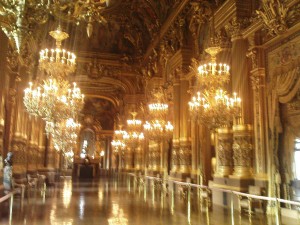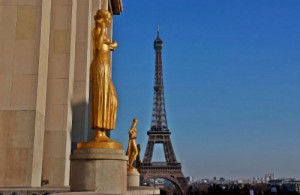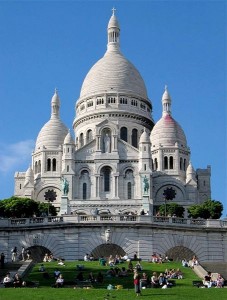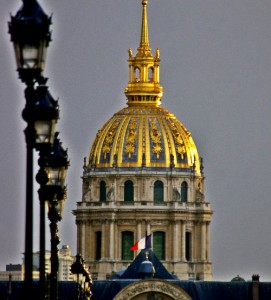Hitler’s morning off in Paris.
It is early morning on 23rd June 1940.
Paris has been occupied for over a week. An armistice was signed in the same railway carriage, at the same spot in the Forest of Compiègne where Foch had imposed terms on the German delegation in 1918.
At Le Bourget the light catches a military transport aircraft landing. Hitler and his entourage (including Albert Speer, Hermann Giesler and Arno Breker, his favourite architects and sculptor respectively) are aboard, having flown from the Führer’s temporary HQ near Sedan.
The party had left at 3am, with the civilians in borrowed uniforms as Hitler would not permit civilians in his party on captured territory.
They drive through the awakening suburbs directly to the Paris Opera House, where they are met by Colonel Hans Spiedel of the Occupation Authority.
According to Speer’s account, Hitler is fascinated by the imposing building and inspects the opulent décor minutely, having studied the building plans.
Accompanied by a white-haired usher, the group moves through the deserted but brightly lit building, admiring the sweeping stairway, the foyer and the rest.
At the end of the visit Hitler instructs his adjutant to give the man a ‘pour boire’ (tip) – which is politely but firmly refused.
Twice.
The next items on the itinerary are the Madeleine, Place de la Concorde, and the Arc de Triomphe. At the Palais de Chaillot he poses with Speer and Breker, the Eiffel Tower looming behind them.
This is as close as Hitler gets to the Tower.
French officials have told the Germans that the lift cables have been cut!
The Führer declines to climb the stairs, allowing Parisians to the say that Hitler may have conquered France but he never conquered the Eiffel Tower.
At Les Invalides, Hitler stands contemplating the Napoleon’s Tomb, no doubt his eyes lingering on the names of the famous victories inscribed on the floor around the sarcophagus.
A cursory stop at the Panthéon (the proportions of which impress the Führer – unlike the Place des Vosges, Hôtel de Ville, and the Louvre) before a final stop at the Sacré-Coeur.
Standing with his entourage overlooking Paris he is recognised (and ignored) by those attending Mass.
By 9 am the tour is over.
But not before Hitler has ordered the destruction of memorials to General Charles Mangin and British nurse Edith Cavell, reminders of Germany’s First World War defeat.
He has already ordered the destruction of the armistice site and that the railway carriage used for the signature be exhibited in Berlin.
Hitler has spent three hours in the French capital.
During his visit Hitler talks of a victory parade in Paris. Discussing it with Spiedel, he decides against it, citing the possibility of harassment by the RAF.
Spiedel would later be involved in ‘Operation Valkyrie’, the plot to kill Hitler at the Wolf’s Lair near Rastenburg in Eastern Prussia.
In early December 1940 Hitler orders that the coffin of Napoleon II, the 21-year old King of Rome, be taken from its burial place in Vienna and returned to France.
Senior Wehrmacht officers accompany the heavy and imposing coffin as it is transported by special train to Paris.
On 14 December 1940, a century after Napoléon’s remains were returned to France from St Helena, ‘L’Aiglon’ joins his father under the dome at Les Invalides.
For the next quarter of a century the son is in the way. Committees meet to agree where put him. Nothing is decided – until De Gaulle decrees that he is reburied in the lower church, out
of the way, with only a small plaque to mark his final resting place.
It seems no one can bear to look at Hitler’s tainted gift.
(With thanks to one of my readers, Richard Maddox (UK), for his well written and exciting story of Hitler’s visit to Paris.)





